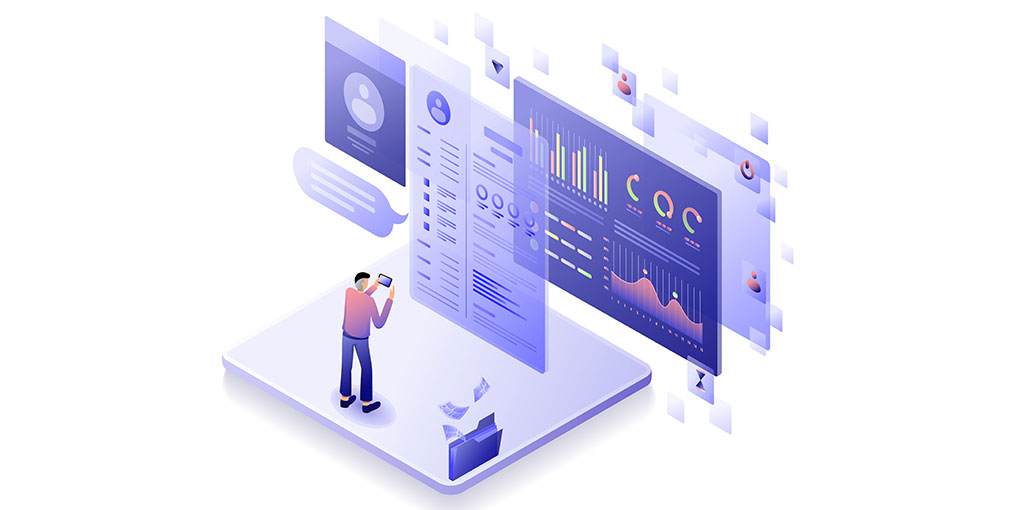Communication information has become a challenging task with the explosion of data over recent years. Visual content is becoming more accessible to people.
With increasing data availability, the need to communicate information using visualizations has grown. Therefore, the demand for visualization tools is on the rise. There are many options, so how do you choose the right visualization tool for your project?
If you are new to visualization, it is a good idea to try out different solutions. This will allow you to create standard graphics quickly. Flexible libraries are best for more skilled users who have more technical knowledge.
Best Data Visualization Libraries
1. D3
When talking about data visualization, it’s impossible not to mention D3. This library was created by Mike Bostock and has quickly become the most popular tool for SVG vector graphics. SVG graphics look sharp no matter how far you zoom in. D3 can be used to create advanced graphs such as nets and trees, maps, or bubbles. in addition to the usual graphs like bars or dispersion. Many libraries built on top of D3 have been developed to provide more innovative solutions such as NVD3.
D3 allows you to load data into your browser and create reports based on the elements. It does not recommend any particular graphics, but a way to visualize information. The library’s flexibility makes it time-consuming but well worth it.
Also read: Best Python Libraries for Every Become Python Developer
2. Processing
Processing is a tool that has been around for many years. It can be downloaded and installed on every platform. Processing is a simple language that allows you to visualize and analyze code lines as well as write them. Processing doesn’t require you to be familiar with javascript. It has its own language and development environment. This can be a benefit for some, while for others it could be a disadvantage. You simply need to generate some code and place them on your site as a user. There is an extensive community available to assist you at all times.
3. Raphael
Raphael a library that focuses on compatibility with various browsers. It also uses SVG elements, which are fully scalable and without pixelation. It can create animations and insert various components. There are many libraries that have been built on top Raphael’s foundation, including D3 and morris.js.
4. Google Charts
Google owns its own library to create interactive data visualizations in HTML5/SVG. It is called Google Charts. It is compatible with multiple browsers and devices. You can choose from simple charts such as bars and pie charts, or more complicated charts such as trees and timelines, bubbles, trees, and Gantt charts. Its simplicity in creating animated graphics with a temporal component is one of its key features. More examples of various visualizations are available here.
5 Highcharts
Highcharts, one of the most used tools, offers many types of visualizations including maps. Highstock is a visualization tool that can be used to display financial data. Export graphs can be exported in many formats, including PNG, JPG, and SVG.
Highcharts can be used for personal or non-commercial purposes. However, you will need to purchase a license if you have a business. You can view different types of charts, such as here.
6. Fusion Charts
FusionCharts, another commercial data visualization tool, is actually the most expensive. However, it is one of the most flexible and offers the most out-of-the-box visualization options. You can customize it in great detail and have a wide range of dashboards to suit different business needs. It supports JSON, XML, and the most recent browsers. You can also export graphics such as PNG, JPEG, or SVG to the web.
7. Charts.js
Chartjs supports simple charts such as line, bar radar, polar, polar, and cakes. It is an open-source library. These charts are clear enough to meet most communication requirements. All graphics are HTML5 responsive and interactive. It is very light, only 11kb when compressed.
Also read: Top 10 Backend Frameworks For Web Development
8. Vis.js
Visjs is an open-source library that supports all modern web browsers. You can create simple graphs such as lines and bar graphs, and more complex ones like networks. It also supports other interesting libraries like timelines or 3D graphics.
9. Dygraphs
Dygraphs, an open-source library for data visualization using Javascript, is available. This library is ideal for data with varying time periods, such as financial data. The library automatically adjusts scales, timestamps, and allows you to work with dense, compressed, and high-volume data. You can also interact with it (including mobile devices) by using drag and zoom. It’s fast and easily customizable.










Leave a comment